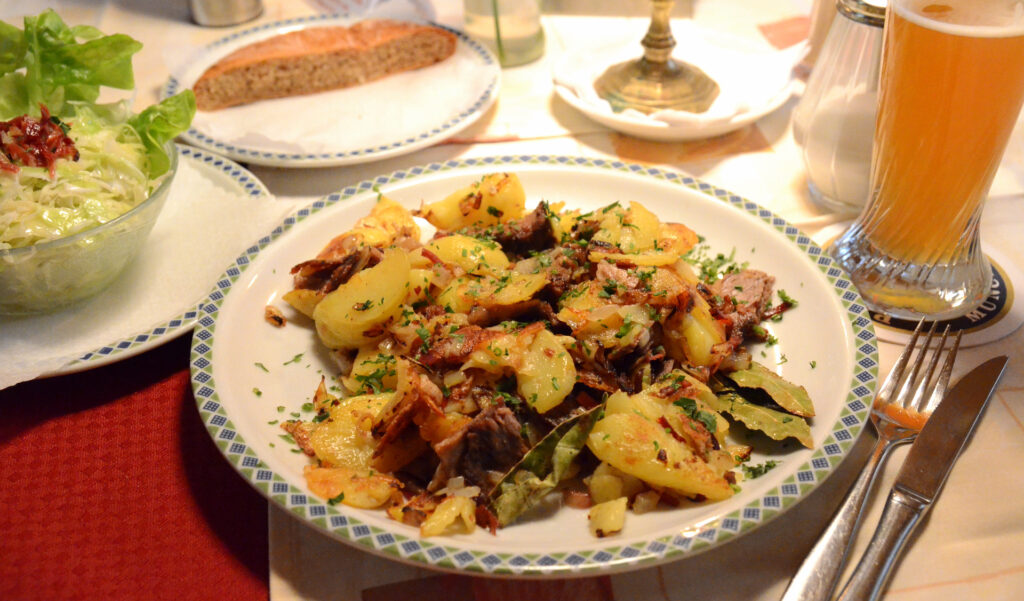
Tiroler Gröstl
This classic comfort dish is a must-try in nearly every Tyrolean inn or alpine hut. Tiroler Gröstl is made by pan-frying leftover boiled potatoes, onions, and slices of beef or pork, all seasoned with caraway seeds and marjoram. It’s typically topped with a fried egg, making it a hearty and satisfying meal any time of day. The dish has humble origins as a way to use up leftovers, but it’s become a favorite for its rich flavors and warm, rustic feel. You’ll find it on almost every traditional menu in the region, often served in a sizzling pan straight from the stove. Simple, delicious, and deeply tied to Tyrolean identity.

Kaiserschmarrn
This fluffy, shredded pancake is as fun to eat as it is to say. Kaiserschmarrn is a sweet, caramelized pancake that’s torn into pieces while cooking, then dusted with powdered sugar and served with plum or apple compote. Despite being a dessert, many restaurants offer it as a main dish thanks to its satisfying portion and comforting sweetness. The edges are golden and crispy, while the inside stays soft and pillowy. Legend has it this was a favorite of Emperor Franz Joseph I, hence the royal name. You’ll spot this on almost every menu in mountain restaurants, and it’s especially popular after a day of skiing or hiking.
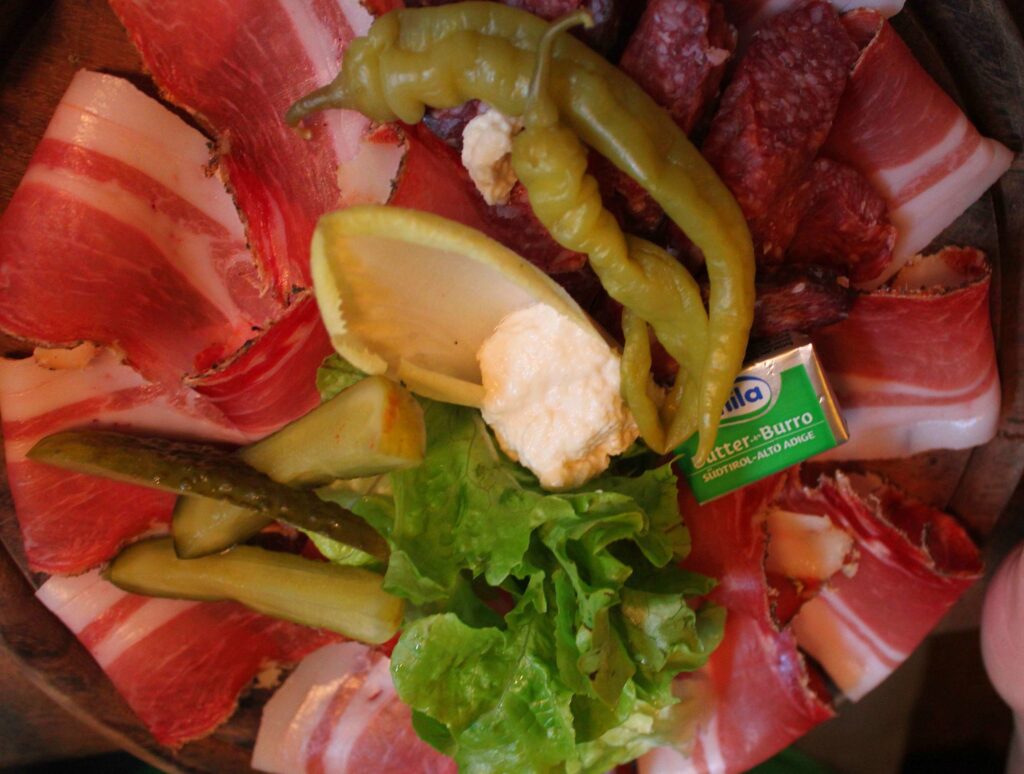
Speckplatte (Speck & Cheese Platter)
The Speckplatte is not just a starter—it’s an experience. This wooden board comes loaded with thinly sliced Tyrolean speck (smoked ham), mountain cheeses, pickles, and hearty rye bread. It’s perfect for sharing and gives a true taste of the region’s alpine heritage. The speck is cured and lightly smoked over beechwood, while the cheese is made from high-altitude grazing cows, giving it a rich and earthy flavor. You’ll often find a dollop of horseradish on the side to add a little kick. It’s a great way to begin a meal, paired beautifully with a local beer or schnapps.
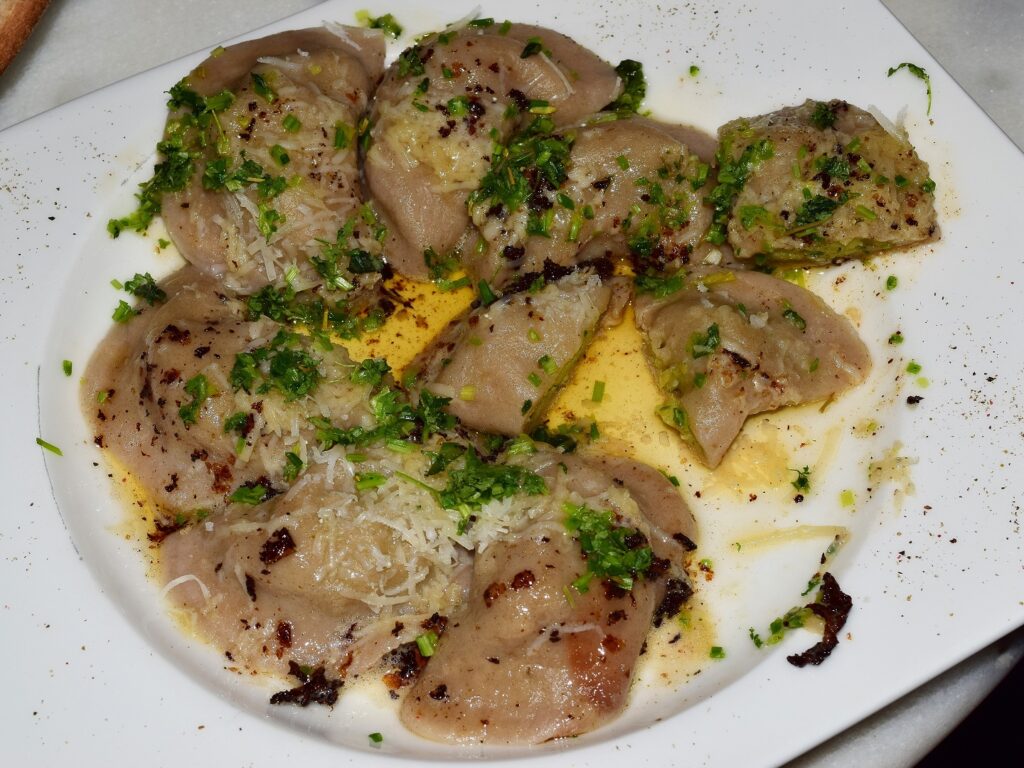
Schlutzkrapfen
These delicate, half-moon dumplings are a beloved starter or light main course in many Tyrolean restaurants. Made with thin pasta dough and filled with a mix of spinach and ricotta, they’re usually served with brown butter and sprinkled with Parmesan. The dough has a soft bite, while the filling is savory, creamy, and gently seasoned with nutmeg. This dish is especially common in South Tyrol but can be found in restaurants throughout the region. It offers a wonderful balance of richness and freshness, making it a favorite for vegetarians and comfort food lovers alike. Schlutzkrapfen showcases the Italian influence on Tyrolean cooking while staying true to alpine roots.
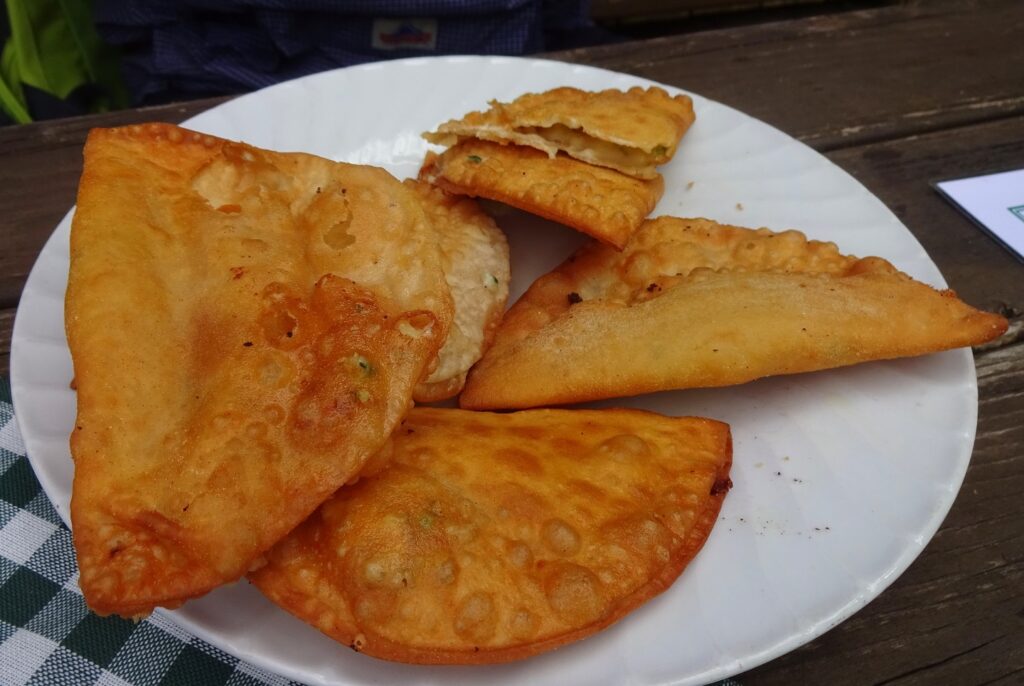
Zillertaler Krapfen
Originating in the Zillertal Valley, these savory cheese-filled pastries are deep-fried to golden perfection. Zillertaler Krapfen are made with dough rolled thin and filled with a hearty mix of potatoes, mountain cheese, and herbs. Once fried, they’re crispy on the outside, soft and cheesy inside, and often served with a green salad. You’ll find them in both fine restaurants and traditional inns, especially in the Zillertal region. The intense flavor of the cheese pairs beautifully with the crisp dough, making it a satisfying appetizer or small main. They’re a beloved taste of Tyrol’s peasant cuisine, elevated to a restaurant favorite.
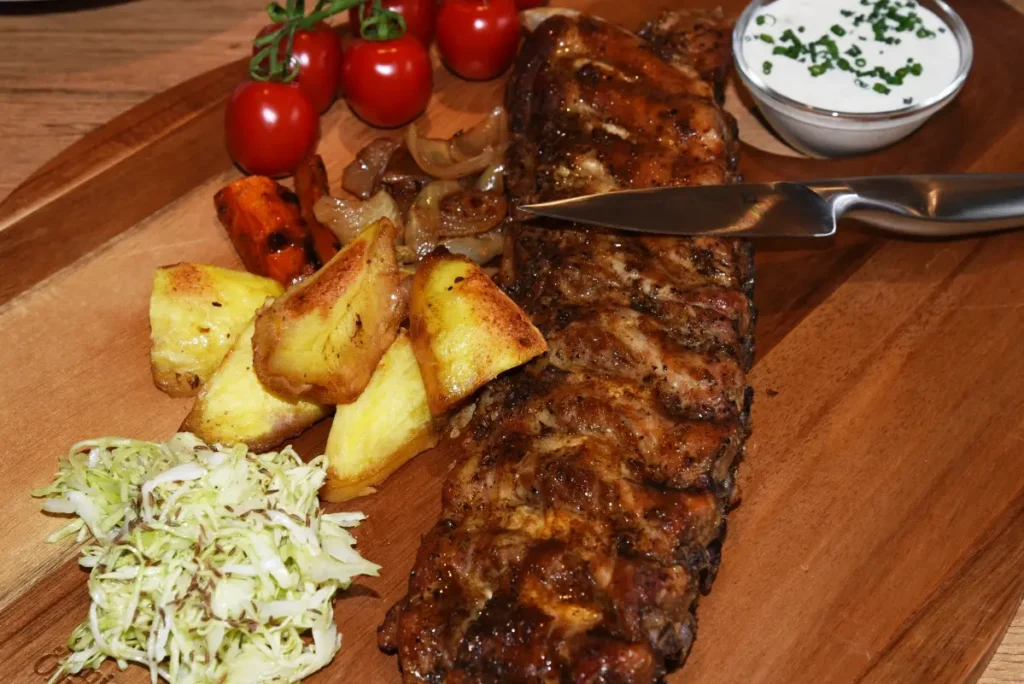
Rippelen (Tyrolean Spare Ribs)
If you’re craving something meaty and bold, Rippelen is the way to go. These Tyrolean-style spare ribs are marinated with garlic, herbs, and spices before being slow-roasted until they’re fall-off-the-bone tender. Most restaurants serve them with potato wedges, sauerkraut, and tangy sauces on the side. The smoky aroma and deeply savory flavor make this dish a crowd-pleaser. Many alpine taverns serve Rippelen on wooden boards for a rustic feel. It’s the kind of dish that keeps people coming back for seconds.

Knödel Trio (Dumpling Trio)
Dumplings are a cornerstone of Tyrolean cooking, and a Knödel Trio lets you sample the best of them all in one plate. Usually, the trio includes a Speckknödel (bacon dumpling), Spinatknödel (spinach and cheese), and Käseknödel (cheese). These round, hearty dumplings are boiled and often served with melted butter, cheese, or a clear broth. Each one has a unique texture and flavor, and together they tell the story of mountain comfort food. Restaurants across the region offer this as a vegetarian-friendly or mixed dish option. It’s the perfect way to taste Tyrol’s variety in one go.
Gulaschsuppe (Goulash Soup)
Tyrolean goulash soup is a rich, spicy beef stew served piping hot in nearly every mountain hut. It’s made with tender chunks of beef, paprika, onions, and a touch of caraway, giving it bold and warming flavors. The soup is hearty enough to stand as a main dish, often accompanied by slices of fresh rye bread. It’s especially comforting in winter, when a warm bowl of goulash feels like the perfect remedy for cold weather. Though it has Hungarian origins, Tyrol has made it its own with local touches. It’s a popular item on ski resort menus for its filling, energy-boosting qualities.
Apfelradln
Apfelradln, or apple fritters, are a popular dessert or snack in Tyrolean restaurants. Slices of tart apple are dipped in a light batter, fried until golden, and dusted with powdered sugar. They’re often served with a cinnamon-sugar mix or a scoop of vanilla ice cream. The crisp batter contrasts beautifully with the warm, soft apple inside. It’s a simple dessert, but its comforting flavors make it a standout. Restaurants love to serve this as a sweet ending to a traditional Tyrolean meal.
Marillenknödel
These apricot-filled dumplings are a classic dessert available during apricot season, and many restaurants continue offering them year-round due to popular demand. The soft dough—made from potatoes or curd—is wrapped around a fresh apricot, then boiled and rolled in browned breadcrumbs. It’s then topped with powdered sugar and sometimes a drizzle of butter or fruit sauce. The warm, juicy center contrasts perfectly with the soft outer layer. Whether served in a fine dining setting or a cozy guesthouse, this dish is loved for its balance of sweet, tart, and buttery flavors. It’s a beautiful example of Tyrolean sweetness rooted in nature.